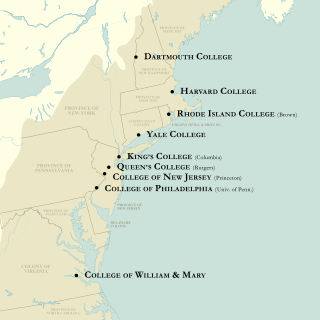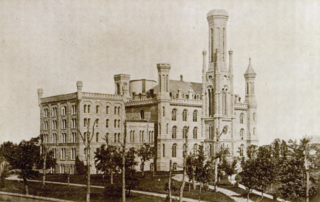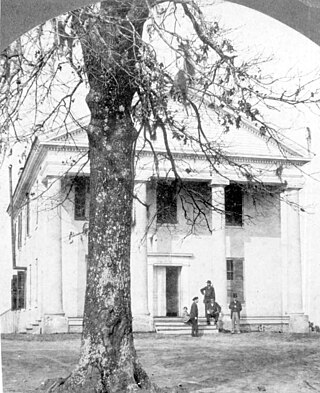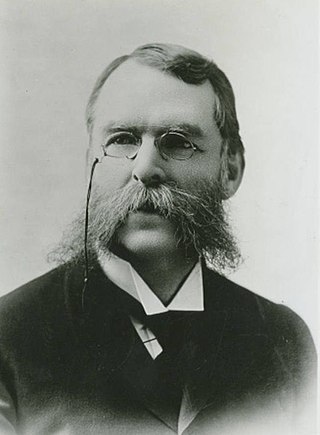
Iowa State University of Science and Technology is a public land-grant research university in Ames, Iowa. Founded in 1858 as the Iowa Agricultural College and Model Farm, Iowa State became one of the nation's first designated land-grant institutions when the Iowa Legislature accepted the provisions of the 1862 Morrill Act on September 11, 1862, making Iowa the first state in the nation to do so. On July 4, 1959, the college was officially renamed Iowa State University of Science and Technology.

Humboldt is a city in Humboldt County, Iowa, United States. The population was 4,792 at the time of the 2020 census, gaining 102 people over the 2010 total.

A normal school or normal college is an institution created to train teachers by educating them in the norms of pedagogy and curriculum. In the 19th century in the United States, instruction in normal schools was at the high school level, turning out primary school teachers. Many such schools are now called teacher training colleges or teachers' colleges, but in Mexico, continue to be called normal schools, with student-teachers being known as normalistas. Many schools currently require a high school diploma for entry, and may be part of a comprehensive university. Normal schools in the United States, Canada, and Argentina trained teachers for primary schools, while in Europe, the equivalent colleges typically educated teachers for primary schools and later extended their curricula to also cover secondary schools.

The University of Dubuque (UD) is a private Presbyterian university in Dubuque, Iowa. About 2,200 students attend the university.
Luther College is a private Lutheran liberal arts college in Decorah, Iowa. Established as a Lutheran seminary in 1861 by Norwegian immigrants, the school today is an institution of the Evangelical Lutheran Church in America. The upper campus was listed as the Luther College Campus Historic District on the National Register of Historic Places in 2021.

The colonial colleges are nine institutions of higher education chartered in the Thirteen Colonies before the United States of America became a sovereign nation after the American Revolution. These nine have long been considered together, notably since the survey of their origins in the 1907 The Cambridge History of English and American Literature.

University College, Bristol was an educational institution which existed from 1876 to 1909. It was the predecessor institution to the University of Bristol, which gained a royal charter in 1909. During its time the college mainly served the middle classes of Bristol, and catered for young men who had entered a family business and needed a greater understanding of scientific topics.

Sophia Smith founded Smith College in 1870 with the substantial estate she inherited from her father, who was a wealthy farmer, and six siblings.

The University of Science and Arts of Oklahoma (USAO) is a public liberal arts college in Chickasha, Oklahoma. It is the only public college in Oklahoma with a strictly liberal arts–focused curriculum and is a member of the Council of Public Liberal Arts Colleges. USAO is an undergraduate-only institution and grants bachelor's degrees in a variety of subject areas. The school was founded in 1908 as a school for women and from 1912 to 1965 was known as Oklahoma College for Women. It became coeducational in 1965 and today educates approximately 800 students. In 2001, the entire Oklahoma College for Women campus was listed as a national historic district.

Morris Brown College (MBC) is a private Methodist historically black liberal arts college in Atlanta, Georgia. Founded January 5, 1881, Morris Brown is the first educational institution in Georgia to be owned and operated entirely by African Americans.

Tougaloo College is a private historically black college in the Tougaloo area of Jackson, Mississippi. It is affiliated with the United Church of Christ and Christian Church. It was originally established in 1869 by New York–based Christian missionaries for the education of freed slaves and their offspring. From 1871 until 1892 the college served as a teachers' training school funded by the state of Mississippi. In 1998, the buildings of the old campus were added to the National Register of Historic Places.

The Old University of Chicago was the legal name given in 1890 to the University of Chicago's first incorporation.

St. La Salle Hall is an H-shaped four-story structure built in the Neoclassical style in the Philippines. It was built from 1920 to 1924 to serve as the new campus of De La Salle College due to a lack of space in the previous campus in Paco, Manila, and to accommodate its increasing student population. It served as the grade school and high school building back from when the college was still offering those levels.

The history of Florida State University dates to the 19th century and is deeply intertwined with the history of education in the state of Florida and in the city of Tallahassee. Florida State University, known colloquially as Florida State and FSU, is one of the oldest and largest of the institutions in the State University System of Florida. It traces its origins to the West Florida Seminary, one of two state-funded seminaries the Florida Legislature voted to establish in 1851.

The University of Pittsburgh, commonly referred to as Pitt, is an independent, state-related, doctoral/research university in Pittsburgh, Pennsylvania, United States. For most of its history, Pitt was a private institution until it became part of the Commonwealth System of Higher Education in 1966.

The University of Toledo is a public research university in Toledo, Ohio. It is the northernmost campus of the University System of Ohio. The university also operates a 450-acre (180 ha) Health Science campus, which includes the University of Toledo Medical Center, in the West Toledo neighborhood of Toledo; a 160-acre (65 ha) satellite campus in the Scott Park neighborhood of Toledo; the Center for the Visual Arts is located in downtown Toledo at the Toledo Museum of Art; and a research and education facility, known as the Lake Erie Center, at Maumee Bay State Park.

The Queens Campus or Old Queens Campus is a historic section of the College Avenue Campus of Rutgers, The State University of New Jersey in New Brunswick, New Jersey, in the United States.

The George Washington Memorial Building or George Washington Victory Memorial Building was a national building project supported by the George Washington Memorial Association which started in 1897 with a building project designed in 1914. The goal was to build a National University in the memory of George Washington as envisioned by him in his will. It was originally supported by Congress and personalities and U.S. presidents but failed due to a lack of funds. The donations gathered over the years were passed on to the George Washington University.

Annie Nowlin Savery was an American suffragist and philanthropist based in Des Moines, Iowa. She is known as a pioneer feminist and activist for woman suffrage. She began taking part in the woman suffrage movement in the 1860s, and became a leader in the county and state, speaking widely and helping establish organizations to support it.

James Henry Smart was an American educator and administrator who served as the fourth president of Purdue University from August 23, 1883, until his death in 1900. An initiative of his led to the founding of the organization today known as the Big Ten Conference in 1896.



















